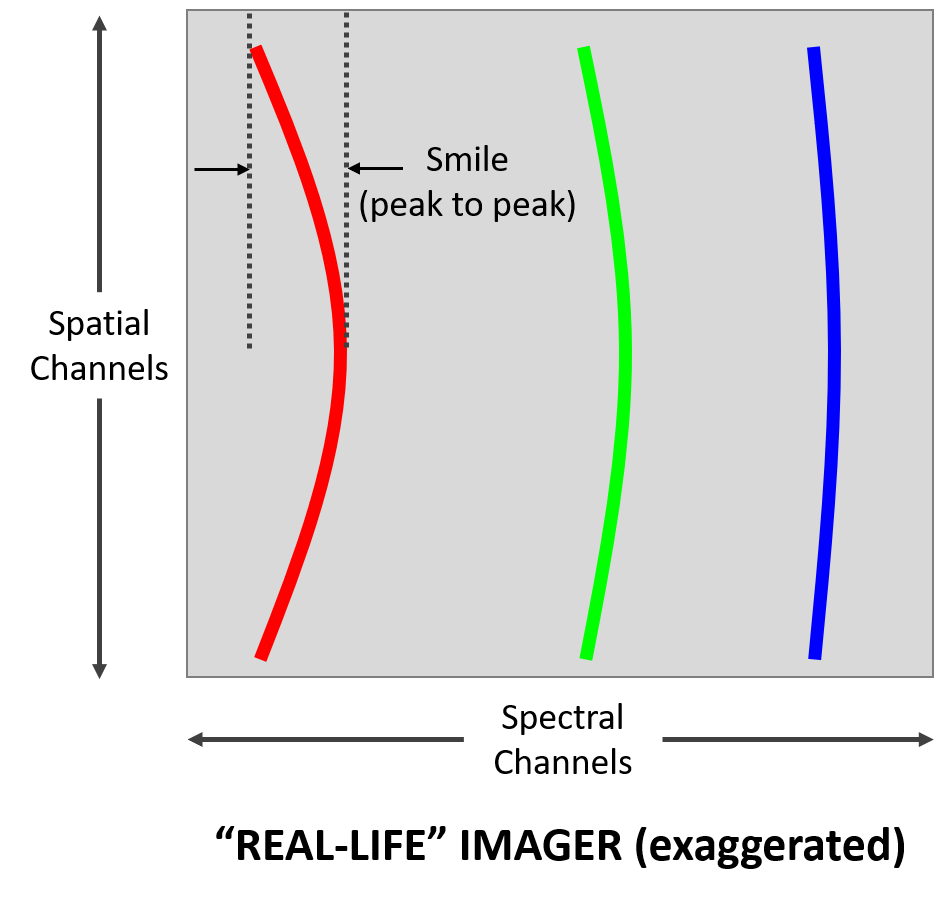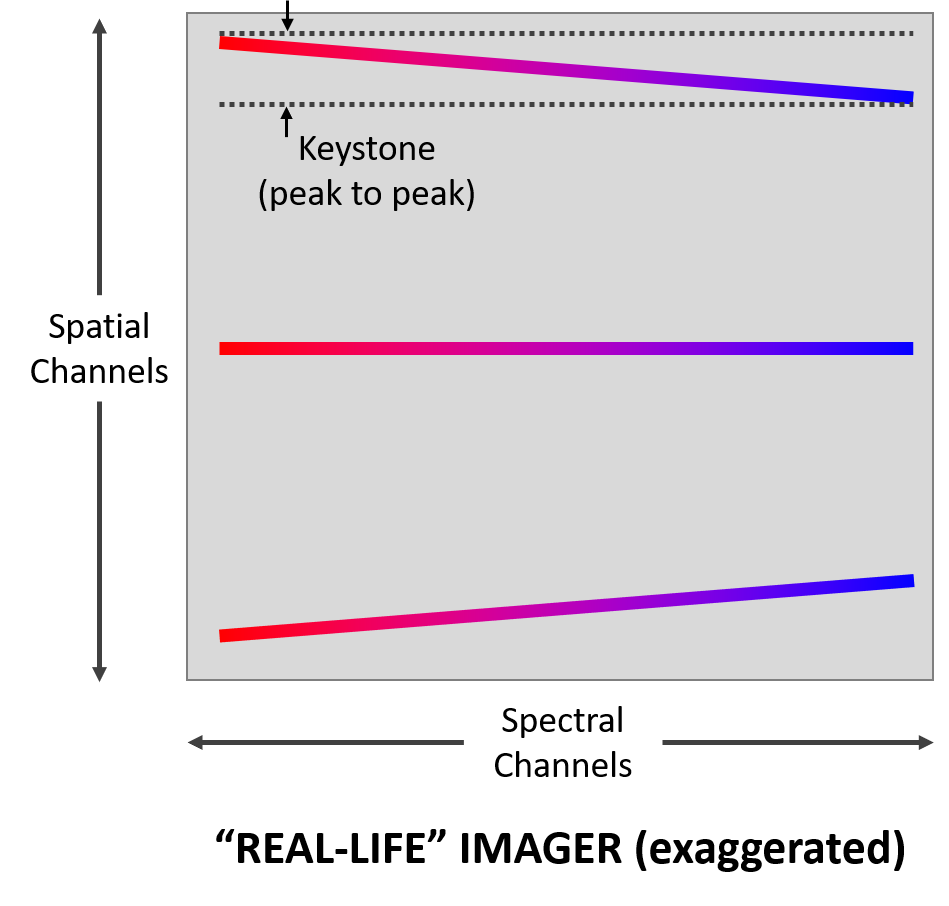13. Glossary of Hyperspectral Imager Terminology
- Datacube
- The images taken by hyperspectral imagers are stored as datacubes. Similar to RGB images, datacubes have two
spatial dimensions and one spectral dimension, except that the spectral dimension can have hundreds of “colors”.
Datacubes are often accompanied by metadata that store additional info about the datacube (e.g., the size of
each dimension and the spectral wavelengths).
- Spectral Range
- The range of electromagnetic wavelengths (e.g. light) over which the hyperspectral imager collects signal. For
reference, visible wavelengths span from approximately 400 to 700 nanometers (nm).
- Spectral Channels
- The number of wavelength bands that the hyperspectral imager measures across the Spectral Range.
- Spectral Resolution
- A measure of the narrowest spectral feature (in nm) that you can measure with a hyperspectral imager.
Alternatively, it is the width of each spectral channel of the imager in nm.
- Spectral Pixels
- The number of pixels across which the spectral signal is imaged. Line-scan (aka. push-broom) hyperspectral
imagers distribute spectral data along one-axis of the two-axis camera focal plane array and spatial data along
the other axis.
- Spectral Sampling
- The Spectral Sampling is the Spectral Range divided by the Spectral Pixels. The Spectral Sampling is often
narrower than the Spectral Resolution.
- Spatial Channels
- Resonon’s hyperspectral imagers are line-scan or push-broom imagers. The Spatial Channels are the number of
pixels along this line.
- Max. Frame Rate
- The maximum line-scan rate of the hyperspectral imager. (This is NOT the 2-dimensional image acquisition frame
rate, which is slower and depends on the number of lines in the image.)
- Bit Depth
- The resolution of the data recorded for each pixel. For example, a Bit Depth of 12 means that each signal
acquisition is stored as one of 212 = 4096 discrete values.
- f/#
- f-number
- f/# is a measure of the lens speed, and is a quantity that is needed to determine the optical system’s
radiometric performance. f/# for a hyperspectral imager means the same as it does for a conventional camera.
- Average RMS Spot Radius
- This is a measure of the resolution of the hyperspectral imager and is averaged across the Spectral Range of the
imager.
- Smile (peak to peak)
- Smile is an optical distortion associated with hyperspectral imagers that manifests when light from a single
wavelength falls across different spectral columns of the focal plane array for different spatial channels. The
figures show the signal that a “perfect” hyperspectral imager would obtain for a uniformly lit sample with
narrow-band red, green, and blue signal, along with an exaggeration of the signal that a “real-life”
hyperspectral imager obtains. Peak-to-peak Smile for the red signal is the distance between the black vertical
lines. All real hyperspectral imagers have some Smile, usually measured in pixels. Smile leads to spectral
signatures that change slightly across different spatial channels.
- Keystone (peak to peak)
- Keystone is an optical distortion associated with hyperspectral imagers that manifests when light from a single
spatial position falls across different spatial rows of the focal plane array for different spectral channels.
The figures show how a “perfect” hyperspectral imager would map the signal from three spatial channels, one at
the top of the field of view, one in the middle, and one at the bottom, along with an exaggeration of the signal
that a “real-life” imager maps the same signal. The peak-to-peak Keystone is the distance between the dashed
lines, measured in pixes. All real hyperspectral imagers have some Keystone, which causes the signal to be
“mixed” between spatial channels.




